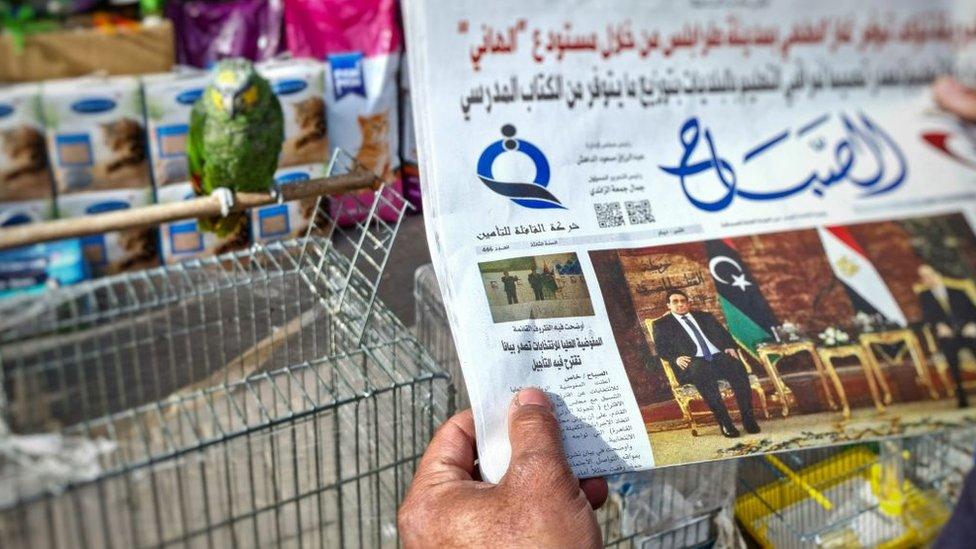Libya media guide
- Published
This page is no longer being updated. It was last updated on 22 February 2023

Libya has had a fluid and fractured media landscape since the overthrow of Muammar Gaddafi in 2011.
The existence between 2014 and 2021 of rival authorities in the west and east created political and media polarisation and enduring rivalry between key players.
As part of a new push for reconciliation under a unified interim government, parallel "state media" run by the two administrations are being merged.
Editorial stances shift, depending on the political and military situation.
The battle of narratives on social media and TV has fuelled disinformation. Foreign players whose interventions in Libya have increased are also involved in media messaging.
There is a diverse media environment, with a multitude of outlets and a variety of platforms. Satellite TV is a leading news medium. Stations' social media accounts are key news sources. Some prominent outlets are based outside Libya.
Local and international journalists face threats and attacks. Despite infrastructure limitations, internet use is rising markedly year by year.
Facebook remains the preferred social media platform and is used for official statements, political discussion and popular mobilisation. There were 6.6 million internet users by December 2021, comprising 94% of the population (Worldinternetstats.com).
Press
Al-Shuruq, external - Tripoli-based weekly
Al-Wasat, external - Cairo-based weekly
Brnieq, external - Benghazi weekly
The Libyan Address, external - publishes in English and Arabic
Television
218 TV, external - private satellite station, based in Jordan. Also runs 218 News
Libya al-Ahrar TV, external - private satellite channel, now based in Turkey
Al-Salam TV, external - private, satellite station based in Turkey
Libya al-Hadath, external - private, linked to Gen Haftar's family
Al-Rasmeya and Al-Wataniya - Tripoli-based, representing Government of National Unity (GNU)
Al-Wasat, external - private, via satellite, based in Cairo
Libya's Channel, external - private, via satellite, based in Amman
Radio
Wataniya - state-run, based in Tripoli
Tripoli FM, external - private, Tripoli
Lebda FM, external - private, Tripoli
Libyana Hits, external - private, based in Benghazi
Al-Wasat, external - private, based in Egypt, on FM in Libyan cities
News agencies/internet
Libyan Arab News Agency (Lana), external - the parallel east and west "state" news agencies, both named the Libyan Arab News Agency (Lana) or Wakalat al-Anba al-Libiyah (WAL), announced in 2021 they would merge
Arraed News Network, external - Tripoli-based, Islamist-affiliated
Ean Libya, external - London-based news site
Libyan Cloud News Agency, external - Tunis-based, European-backed
Al-Wasat, external - Cairo-based news site
Fassato News Agency, external - Rome-based news site
Libya Herald, external - English-language news
Afrigate News, external - news website
All Libyan Blogs, external - blog aggregator